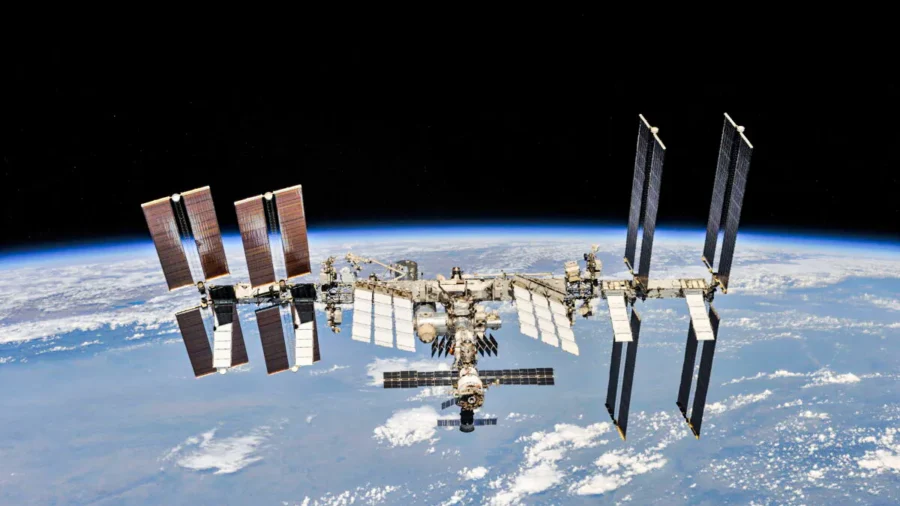NASA’s inspector general is warning of growing cracks and leaks in the more than 25-year-old International Space Station’s (ISS) Service Module Transfer Tunnel, which connects the station’s Russian segment to a docking port.
The station serves as the world’s preeminent orbiting microgravity research and development laboratory, with components of the station first placed into space in 1998 by NASA and Russia’s Roscosmos. Since then, multiple space agencies have added their own elements to the station, enhancing its capabilities.
Now, according to a Sept. 26 report by NASA’s Office of Inspector General, the station faces new challenges to stay in operation until its planned de-orbit in 2031, including supply chain challenges and growing cracks and leaks.
“On-going cracks and air leaks in the Service Module Transfer Tunnel are a top safety risk,” the report reads. “NASA and Roscosmos are collaborating to investigate and mitigate the cracks and leaks, determine the root cause, and monitor the Station for new leaks.”
First discovered in Sept. 2019, the leak was releasing 1.2 pounds of atmosphere per day. More recently, the leak peaked at 2.4 pounds of atmosphere per day in February 2024 before reaching a new high in April of 3.7 pounds per day.
The root cause for the leak is currently unknown, according to officials.
Attempting to minimize air loss, the tunnel has been kept closed when not in use as researchers look for a cause, including examining metals and welds.
“Both agencies are collaborating to investigate and mitigate the cracks and leaks; determine the root cause, which includes sharing sample metals, welds, and Roscosmos investigation reports,” according to the report.
When the tunnel was last inspected in June 2024, no other leaks were found, but neither agency has determined where to draw the line if the leak worsens, potentially resulting in a permanent closure of the tunnel.
The leaking tunnel is one of four service modules used to transport cargo. If closed, cargo delivery would be impacted, and additional propellant would be needed to maintain the space station’s altitude, according to the report.
Between the 2019 and 2023 fiscal years, the station has cost NASA a steady $1 billion per year for system operations and maintenance, but officials say costs are expected to rise. Total costs for related operations and research total $4.1 billion per year.
Since the station is expected to be decommissioned in 2030, some suppliers have or plan to decrease or cease production of needed parts, which further complicates keeping the station alive, and aging repairs and upgrades are needed.
However, in preparation, NASA and Boeing plan for future operational needs in a five-year operational needs assessment, including procuring expected parts needed ahead of time, according to the report.

